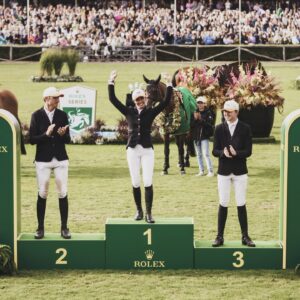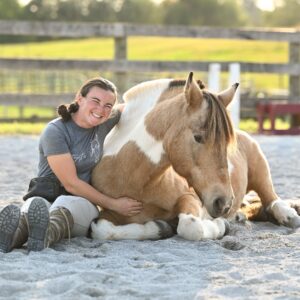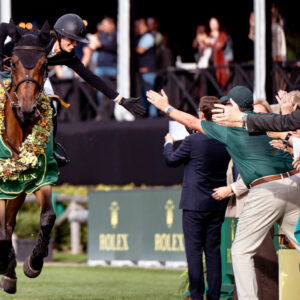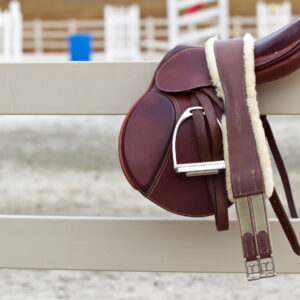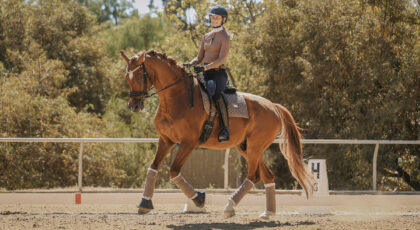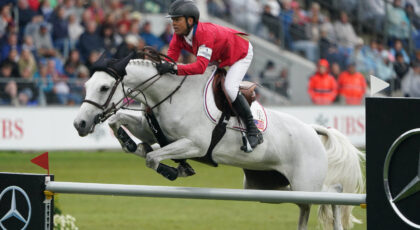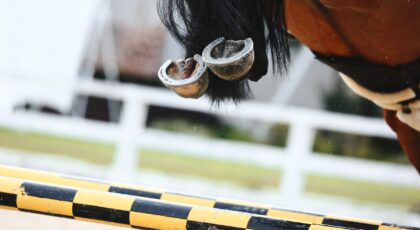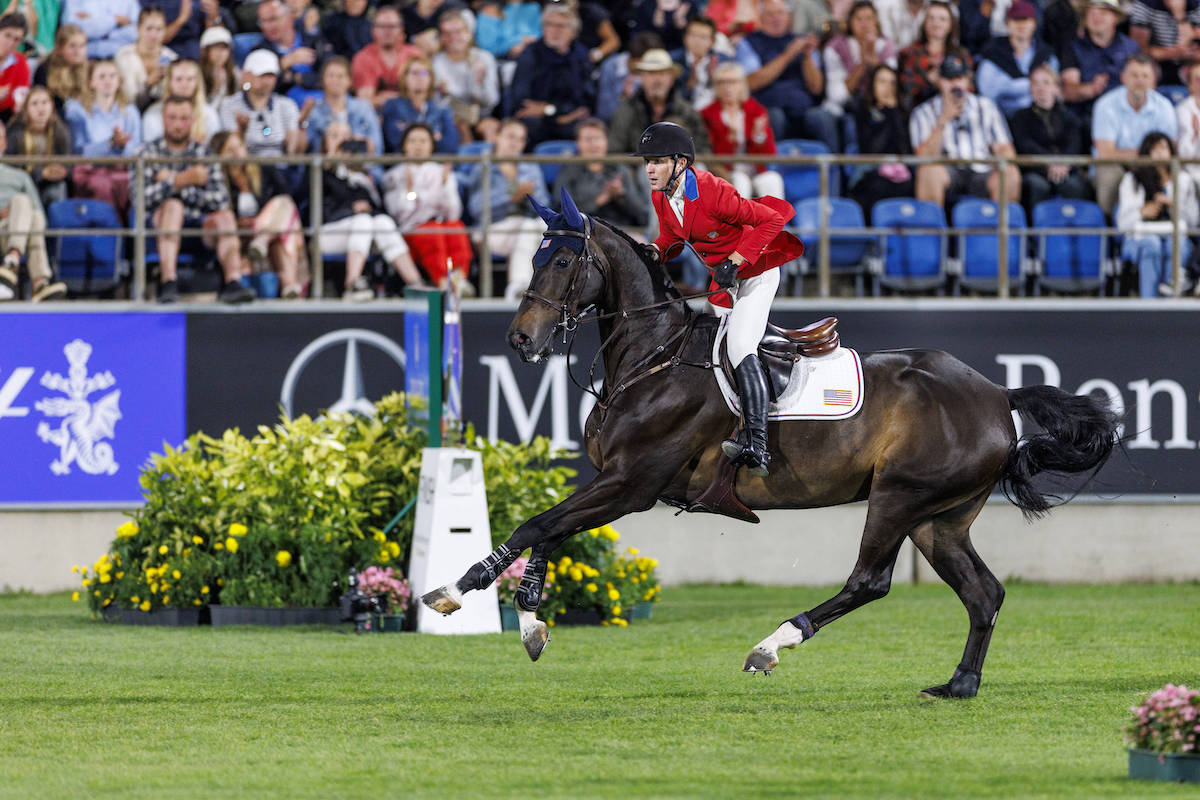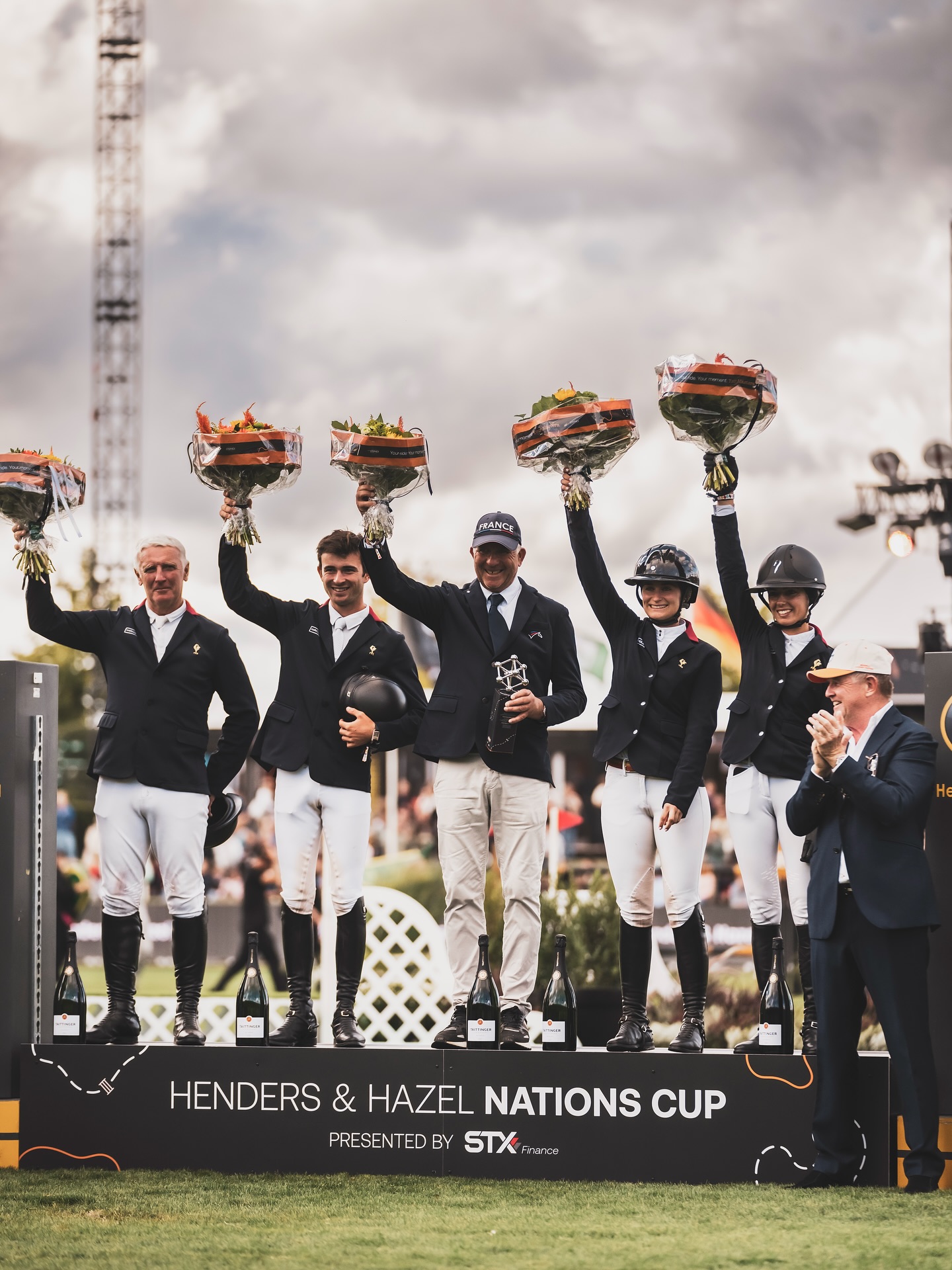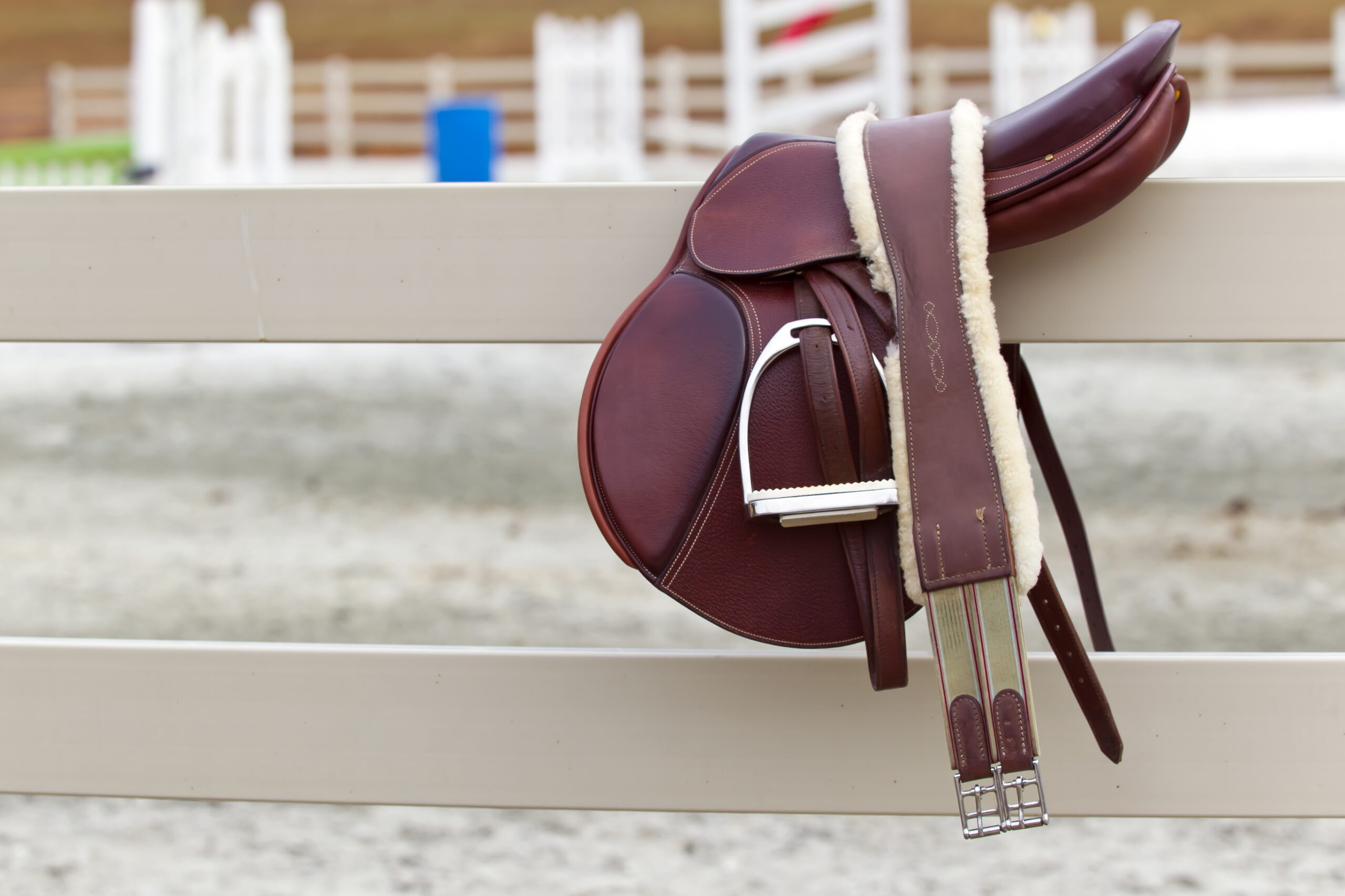I know. As riders, what do we do with that statement?
Are we all, despite peppermints and chiropractors and organic feed and fly sheets, committing atrocious acts of cruelty against our horses?
Not quite, says Simon Cocozza in his book Core Conditioning for Horses. The good news is, we are now better equipped—both in understanding and in know-how—to help our horses move better, rather than simply hinder them. Cocozza proposes a plan for warming up the horse in a way that strengthens his core, enabling him to better carry you (as well as himself).
But first, here’s why he says we need to do it.
***
The stance of a horse brings majesty to a space, representing the freedom, power, and grace within him. The magic of athleticism is Mother Nature’s gift to Equus. For over 50 million years, this creature’s body and mind have been honed to survive and thrive in incredibly hostile and varied environments, while evading some of the scariest predators imaginable. Horses are one of planet Earth’s most determined survivors. The surprising level of athleticism that their bodies can produce is not only the prize we seek but has also been the key to their survival. Microseconds count as much as millennia in evolutionary terms, because if the herd is easy to catch, then soon there is no herd. To survive these frequent, and all too often final, split-second encounters with hungry, fanged beasts, the herbivore has needed to develop a finely tuned sense and sinew for incredible levels of movement.
In a situation where “close” means “curtains,” a short, one-tenth of a second’s head-start makes all the difference when a wolf or lion (or veterinarian!) gets too close. This is why nothing can leave the room faster than a horse. With this legacy and these skills that allowed them to be so wonderfully adapted to their environment, our horsey friends roamed the planet in relative peace and harmony for a very long time.
Then, one day, we turned up.
While equines were merrily minding their own business, we humans clearly saw their talents and have been dragging these cooperative creatures around the world ever since. This, of course, has taken these herbivores way, way beyond their comfort zone. Thankfully, these days we have moved on to thundering around in machines, so at last we can give horses the respect they deserve and concentrate upon what is best for them, putting their welfare parallel to our own.
As with other people, to best help a horse and deliver assistance where he needs it most you can simply look at what is easy and what is hard for him. His strengths and weaknesses will tell you a lot about what particular aspect of his body he is not using enough and that may well be holding the rest of him back. Ironically, when we objectively assess what really holds a riding horse back we have to admit something quite awkward, and that is—from a design, strength, and balance point of view—the horse’s body is simply not designed to carry a person. For 49.9999 million years the design worked very well indeed without people jiggling around on top.
As fate would have it, the most convenient place for us to sit on a horse is possibly the weakest of all. The horse’s back looks strong from the ground but has a lot to carry as it is. Every design has its purpose and its limits, its strong and weak points, and when we sit on a horse’s back we exceed the natural design capabilities…and this changes the horse’s posture.
Oops.

Sitting on the horse’s rear end or withers would be perhaps better for the horse, as both those areas are supported by limbs. But because his back can flex like a Slinky, just sitting on it is enough to alter its delicate alignment.
When we start a youngster, we tend to focus upon the psychological aspect of the task. This makes sense because we have just crawled onto the horse’s back like a panther, so trying to convince him not to run for the hills and never allow us to come near him again becomes the primary concern, usually for some weeks. Once this misunderstanding has been cleared up, and we have explained that we only want to run around the countryside a bit, the horse usually becomes less hysterical about our presence on his back and his education can begin. But although his mind is calmed and you can now ride the young horse, his core muscles are far from strong enough—just by sitting there you put a critical dip in the middle of his back.

Without anyone really thinking about it, this back posture sets in as a habit, right from the start. Although modest and not obvious with a saddle in the way, the spine is a precision instrument and even a slight downward curve is enough to limit the mobility of this very clever and sensitive mechanism. Changes here affect the whole horse, inside and out, in both body and mind. Just like in other vertebrates, the horse’s back must be able to flex, twist, and stretch to be fully athletic. When it can’t, we see a shadow of what this amazing creature can really do.
***

This excerpt from Core Conditioning for Horses by Simon Cocozza is reprinted with permission from Trafalgar Square Books (www.horseandriderbooks.com).


 August 6, 2019
August 6, 2019 








